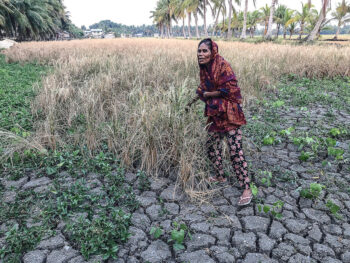KIDAPAWAN CITY (MindaNews/11 Aug) – The construction of a state-of-the-art dam of North Cotabato’s Metro Kidapawan Water District (MKWD) is now half complete, reports say.
Once completed, it would benefit 7,000 households in the city’s eastern portion and nearby towns in North Cotabato, according to Engr. Sandy Alqueza, MKWD assistant general.
The project is worth P40 million and was taken from the more than P250 million loan of the MKWD with the Local Water Utilities Administration (LWUA) released last year.
Construction started early last January at the height of the El Niño phenomenon. It is expected to be completed before the year ends.
This is the fourth intake box the MKWD has constructed since it started its operations more than 10 years ago.
The MKWD has built a 13-kilometer transmission line from Lapaan 4 dam to the two biggest reservoirs located in the eastern and western portions of the city – a 600 cu.m. reservoir at the Cotelco Village and the 500 cu.m. reservoir at Amas Village.
The project, according to Alqueza, is part of the five-year development plan of the MKWD aimed at expanding and improving its waterworks system in North Cotabato.
The source of the dam comes from Kansal Falls located at Sitio Lapaan in Barangay Perez, this city, which was reportedly not affected when the drought hit Mindanao starting late last year.
The water from the Kansal Falls, according to MKWD general manager Stella Gonzales-Anima, is still one of the cleanest and cheapest in Asia.
At present, the MKWD is supplying clean drinking water to 22,000 households and other service connections in the city, and nearby towns in North Cotabato.
On Tuesday, the MKWD, together with some representatives from people’s organizations, non-government organizations, religious sector, local government units, and media, visited the area and planted some 200 seedlings of Tinikaran and Lawaan trees near the dam.
“We make tree planting a regular activity of the MKWD. We also make it a policy that whoever visits the dam must plant at least 10 seedlings of species endemic to the area,” said Anima.
The site where the dam is located at the foot of Mt. Apo is part of the more than 600 hectares declared by the Department of Environment and Natural Resources (DENR) as a protected area. (Malu Cadeliña Manar / MindaNews)
